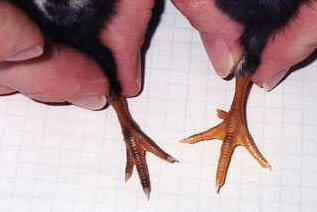 |
Dominique
Chickens Have Sex-Linked Gene
It is fairly
easy to figure out the sex of a chick after it hatches.
A cockerel (male) chick has yellow toes and leg shanks. (In photo at left
he is the chick on the right.) A pullet chick (female) has darker (shadowy
black or gray) toes and leg shanks. (She is the chick on the left.)
As they grow older the leg color differences become less.
Usually the toe/leg color is accurate but some strains of Dominique do not
show this tendency as much as other strains. For some strains using the
head color discussed below is more accurate.
|
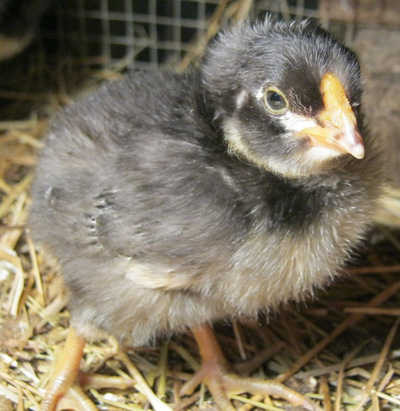 |
Hatchling
Beak Color
Male hatchlings
usually have a clearer (yellow) beak than females (less black on the beak).
And as they get older, the beaks of males become even clearer. Of course,
it depends on the strain of bird.
"A year
ago, I ordered my first flock of chickens, never having kept them before,
or never even having assisted anyone else with a flock. My Dom's have me
entirely chicken crazy." -Heidi, Boulder, Colorado
|
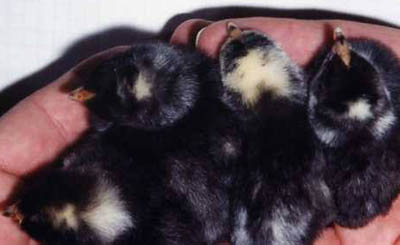 |
Identifying
Male Chicks
Cockerels
have light and scattered, diffused spot(s) of yellow on top of the head.
The male spot is usually larger than the female spot. (See photo at left
of all males.)
As they grow older, all chicks (male and female) lose their yellow spots.
|
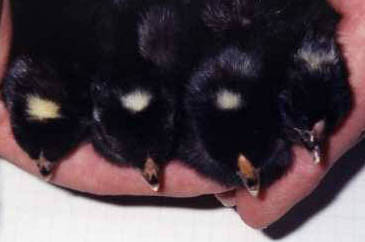 |
Identifying
Female Chicks
Pullets have
a somewhat compact and solid yellow spot on the head. There is no black
inside her spot. The yellow is usually smaller than a male spot. (See photo
at left of all females.)
|
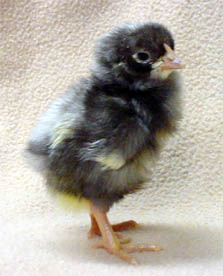 |
Dominique
Chick Sexing
The chick
at the left is a male. His colors are more scattered, diffuse and frosty.
The chick below is a female. Her colors are more concentrated and dark.
Her feet are a little bit darker than the male's feet, though not as dark
as the top photo since there is variation between strains.
|
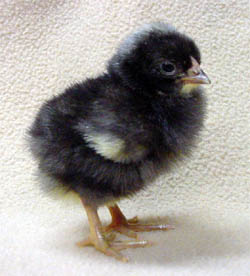 |
How Good
is This Method?
You can sex
chicks using this method and get around 95% accuracy. Determining the gender
of chicks is an art. You get better with more experience.
My Dominique chickens (both standard and bantam) are pure bred. They are
not hybrid chickens. So this sexing characteristic is true for all future
generations.
|
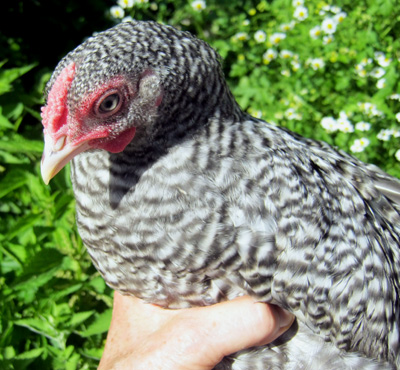 |
Sexing
Chicks When a Little Older (2-7 weeks)
When the chicks
are a few weeks old, the male comb will start to blush (turn red) sooner
than females. As stated above with hatchling sexing, the age this happens
varies with the strain of Dominique.
At about 4 weeks old the male wattles start to grow more and blush. The
female wattles develop more slowly.
Also male legs get thicker faster than female legs.
At about 7 weeks it is easy to see a feather color difference between males
and females. Females are darker.
Cockerels start crowing at about 3-4 months old.
This photo is a cockerel at 7 weeks.
|
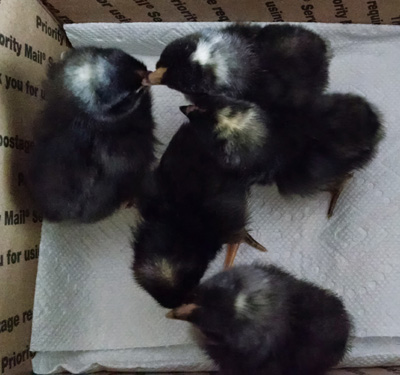 |
Cute
Dominique Chicks
"I hatched
5 healthy Dominique chicks (out of 6) a full 24 hours before any of the
other breeds I set at the same time even started pipping. The friend I hatched
them for loves them, and I will visit again next year to get more."
-Meg, Chattahoochee Hills, Georgia.
This photo
of the top of the chicks' heads is from Meg.
Pipping is when the baby bird cracks the shell to get out. It starts with
the chick chirping in the egg. It moves in a circle cracking out pieces
of the shell. Pipping can take up to 24 hours. You can see the end result
in the photo to the right.
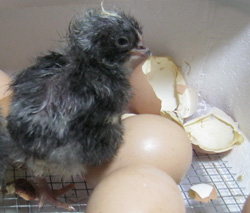
|
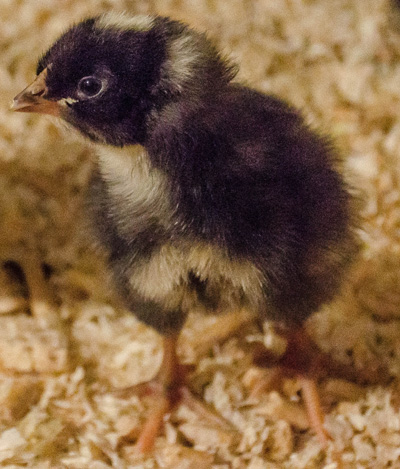
|
Prices
and availability of Dominique hatching eggs.
"I just had to tell you that if I got a 60 to 70% hatch rate with shipped eggs I was doing good. You sent me 7 eggs and one didn't develop but all 6 of the fertilized ones hatched! I am so happy! Thank you so much!"
-Cathy in Lodi, California
|









